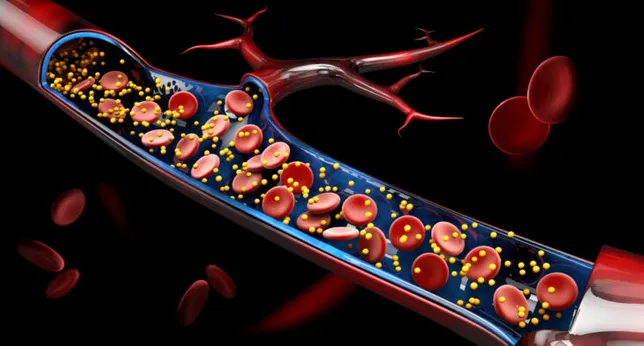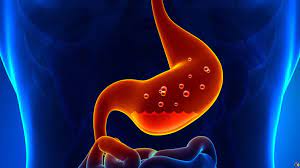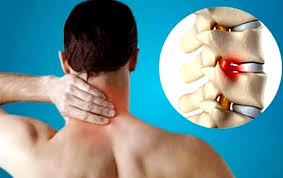Content of the Article
- What is Tendonitis?
- What are the Types of Tendinitis?
- What Causes Tendonitis?
- What are the symptoms of tendinitis?
- Tendonitis Treatment
- Drugs Used in Tendinitis Treatment
- Nutrition in Tendinitis Treatment
- Does tendinitis go away?
- How to Treat Tendinitis?
- Tendonitis Herbal Treatment
- How Long Does Tendinitis Take to Heal?
- How to Prevent Tendonitis?
Tendonitis is a type of injury that causes chronic pain. This disorder occurs when the tendons are excessively stretched as a result of strenuous activities or when the tendons become irritated due to repetitive movements. Tendonitis is common among athletes, exercisers, those with extreme physical activity, and especially older individuals. In this article, you will learn more about tendonitis, recognize its symptoms and learn treatment methods.
What is Tendonitis?
Tendinitis is inflammation of structures called tendons. Tendons are pieces of connective tissue that connect muscles to bones. They enable the muscles that enable movement in the body to function. However, tendons can become damaged and inflamed as a result of overuse, repetitive movements or injuries.
Symptoms of tendinitis include pain, swelling, tenderness and limitation of movement. In the case of inflammation, pain usually increases during activity and eases with rest.
Tendinitis can occur in many different parts of the body. The most commonly affected areas include the arm, shoulder, elbow, wrist, knee, ankle and heel.
Tendinitis usually occurs due to overuse or repetitive movements. For example, athletes, workers or musicians who constantly make the same movements are at risk of tendinitis. However, aging, inadequate warm-up, low fitness level, wrong technique or injuries are also effective factors in the formation of tendinitis.
Treatment of tendinitis aims to reduce inflammation and promote healing. In the initial stages, rest, ice application, painkillers and physical therapy are generally recommended treatment methods. If the condition is serious, doctors may consider surgery as well as corticosteroid injections or physical therapy.
Tendonitis is a health problem that should be taken seriously. If left untreated, pain and limitation of movement may increase and become chronic. Therefore, it is important for people showing symptoms of tendinitis to contact a healthcare professional to begin the process of proper diagnosis and treatment.

What are the Types of Tendinitis?
There are different types of tendinitis, and each affects a specific area. Here are the most common types of tendinitis:
- Epicondylitis: It is a type of tendonitis that occurs on the outside or inside of the elbow. It is also known as tennis elbow. It may occur as a result of repetitive movements or excessive strain.
- Rotator cuff tendinitis: It is a type of tendinitis that occurs in the shoulder. It is characterized by a feeling of pain, stiffness and weakness during activities such as lifting the arms overhead or lifting weights.
- De Quervain tendinitis: It is a type of tendinitis seen in the wrist and thumb area. It may cause pain, swelling and limitation of movement during thumb movements.
- Patellar tendinitis: It is a type of tendinitis that affects the patellar tendon located under the kneecap. It is common among athletes who frequently engage in activities such as jumping or jumping.
- Achilles tendinitis: It occurs due to inflammation of the Achilles tendon located between the ankle and heel. It is associated with high-impact activities such as excessive running or jumping.
These types of tendinitis vary depending on the region and type of tendon affected.
What Causes Tendonitis?
Tendinitis is a condition caused by inflammation in the tendons. This inflammation usually occurs as a result of overuse, repetitive movements, or injury.
The most common cause of tendinitis is overuse. If a tendon is constantly overstretched or strained by repetitive movements, this can lead to inflammation of the tendon. For example, athletes who constantly train the same muscle are at risk of tendinitis. In addition, those who work in jobs that require repetitive movements are also at risk of tendinitis.
Injuries can also cause tendinitis. Sudden strain or direct injury to a tendon can cause inflammation of the tendon. These types of injuries are common among athletes, especially those who must constantly perform high-impact movements, such as runners and tennis players.

What are the symptoms of tendinitis?
Symptoms of tendinitis are as follows:
- Pain: The most common symptom of tendinitis is pain felt in the affected area. Pain can often increase with movement or when a certain movement is performed.
- Swelling: As a result of inflammation, swelling may occur in the tendon area. This swelling may cause tenderness or increased sensitivity to touch in the affected area.
- Redness: In cases of tendinitis, mild redness or changes in skin color may occur in the affected area. This is usually caused by increased blood flow resulting from inflammation.
- Hardness: Limitation of movement or stiffness felt in the tendonitis area is also among the symptoms. This is caused by the tendon restricting normal movement due to inflammation.
- Making sounds: Sounds may be heard in the tendon area as a result of friction or tissues rubbing against each other. This is often described as a “crack” sound.
Tendonitis Treatment
So, how is tendinitis treated?
First, it is important to consult a doctor before starting tendonitis treatment. Correct diagnosis will make the treatment process more effective. Your doctor will create a treatment plan suitable for you and you will need to comply with this plan.
- Tendonitis treatment is usually done with conservative methods. First, rest is important for the affected tendon to heal. Limiting your activities and rest will help tendonitis heal.
- Ice application is also a method used in the treatment of tendinitis. Applying ice helps reduce inflammation and relieves pain. You can apply an ice pack to the affected area for 15-20 minutes. However, it is important that the ice does not come into direct contact with the skin. It is better to apply ice by placing it in a towel or cloth.
- Pain medications can also be used to treat tendinitis. Your doctor will prescribe the medication that is suitable for you. However, painkillers only relieve symptoms and have no therapeutic effect.
- Physical therapy and exercises are also important methods used in the treatment of tendinitis. The physical therapist will determine the treatment and exercises to be applied to you. These exercises will strengthen the tendon and increase its flexibility.
In addition, it is important to control these factors in tendinitis that develops due to an underlying condition or activity. For example, if tendonitis develops due to a repetitive movement, it may be necessary to change or reduce this movement.

Drugs Used in Tendinitis Treatment
Treatment for tendinitis usually includes rest, physical therapy, and medication. So what are the drugs used in the treatment of tendinitis?
- Nonsteroidal anti-inflammatory drugs (NSAIDs): The most commonly used class of medications to treat tendinitis are NSAIDs, which are used to reduce pain and inflammation. These drugs should be used in the doses and durations recommended by your doctor. For example, there are medications such as ibuprofen and naproxen.
- Corticosteroid inflammatory drugs: Corticosteroid medications are used in more severe cases of tendinitis. These medications can be injected directly into the inflamed area or taken orally as tablets or cream. However, it is important to follow your doctor's guidance as there may be side effects with long-term use.
- Topical pain relievers: In cases of superficial tendinitis, topical painkillers can be used to relieve pain. These types of medications are usually applied to the inflamed area and relieve pain.
- Non-steroidal anti-inflammatory drugs (NSAIDs): In cases where corticosteroid drugs cannot be used, SAIDs can be used as an alternative. These also help reduce pain and control inflammation.
- Frozen pain sprays: Frozen pain sprays can be used to relieve tendinitis pain. These sprays reduce pain and provide relief by applying cold to the inflamed area.
Medications used to treat tendonitis often help relieve symptoms and speed up the healing process. However, it is important to consult a doctor before using any medication. Dosage and duration of treatment should be determined individually for each patient's condition.
Tendinitis Surgery
Tendinitis treatment usually begins with conservative methods. However, in some cases, surgery may be required. Tendinitis surgery is a surgical procedure usually performed to repair the tendon or remove loose parts.
Tendinitis surgeries are performed with minimally invasive methods, that is, techniques that provide fewer cuts, less tissue damage and a faster healing process are used. Therefore, people who have tendonitis surgery can often return to normal activities sooner.
Candidacy for tendinitis surgery is given to people who do not respond to treatment or whose symptoms persistently recur. For example, people whose pain persists despite trying conservative treatment or whose tendons are found to be completely ruptured are suitable for tendinitis surgery.
Before surgery, doctors usually determine the severity of tendonitis and the extent of wear using a series of tests and imaging methods. These tests include imaging techniques such as MRI, ultrasound, and x-ray.
Tendinitis surgery is usually performed under local anesthesia. It can also be done with open surgery or minimally invasive techniques. In the post-operative period, your doctor will give you recommendations regarding pain management and recovery process.
The recovery process after tendinitis surgery varies from person to person. It can usually range from a few weeks to a few months. Treatments such as physical therapy, rehabilitation exercises, and restricting certain movements help patients make a full recovery.
However, even in cases requiring tendonitis surgery, it is necessary to start with conservative treatment options and consider surgery as a last resort. Therefore, it is best to see an orthopedic specialist to determine whether you are a good candidate for tendinitis surgery.

Tendinitis Physical Therapy
There are different methods used to treat tendonitis, and physical therapy is one of the treatment options. Physical therapy is a form of treatment administered to people suffering from tendonitis to help relieve pain, improve range of motion, and strengthen strength.
Physical therapy is carried out with various exercises and techniques applied by a specialist physiotherapist. These include methods such as manual therapy, massage, ultrasound, laser therapy and electrical stimulation. The physical therapist will evaluate the person's condition and create an individualized treatment plan.
Tendonitis physical therapy helps a person control pain and inflammation. Exercises also guided by a physical therapist strengthen muscles and increase range of motion. In this way, the person can perform his daily activities more comfortably.
The success rate of physical therapy in tendonitis treatment depends on continuing the treatment in a disciplined manner. It is important for the person to regularly perform the exercises recommended by the physiotherapist and comply with the treatment process. Treatment usually spans several weeks or months, and the recovery process varies depending on the person's condition.
Individuals suffering from tendinitis should consider physical therapy options. This treatment method offers an alternative that does not require medication or surgery. With the guidance and support of a physiotherapist, it can relieve tendinitis symptoms and improve the quality of life.
Nutrition in Tendinitis Treatment
Methods such as physical therapy, medications and rest play an important role in the tendinitis treatment process. However, nutrition is also a factor that should not be ignored in the treatment of tendinitis.
Proper eating habits create a healthy body environment to speed up the healing process and reduce pain. Nutritional habits that should be considered in the treatment of tendinitis are as follows:
- Consume anti-inflammatory foods: Tendonitis is often associated with inflammation. Therefore, it is important to consume foods that have anti-inflammatory effects. fish, olive oil, walnut Foods containing omega-3 fatty acids help reduce inflammation. Herbal anti-inflammatories such as ginger and curcumin (a substance found in turmeric) may also be beneficial.
- Consume protein: Adequate protein intake is of great importance for muscle and tendon tissue repair. Protein sources such as eggs, chicken, fish, red meat, dairy products and beans are essential to support the healing process of tendons.
- Take vitamins and minerals: It is important to take the vitamins and minerals the body needs to speed up the healing process. vitamin C, vitamin E, zinc and magnesium Eating fruits and vegetables containing antioxidants and healing-promoting compounds such as will be beneficial in this regard.
- For water: Constantly consuming water facilitates circulation and nourishment of tissues. Adequate water intake is important for soft tissue healing.
- Antioxidants: Antioxidants found in fruits and vegetables reduce tissue damage caused by free radicals. Therefore, colorful vegetables and fruits (such as broccoli, carrots, red peppers, blueberries) should be included in your diet.

Does tendinitis go away?
So, is it possible to cure tendinitis?
Yes, depending on the treatment process and the patient's lifestyle changes, tendinitis can completely disappear. However, this process differs for each individual and may take time.
The first step in treating tendinitis is rest and limiting activities. If tendonitis is caused by a sport or repetitive movement, it may be necessary to stop or reduce these activities for a while. Rest helps the tendon heal.
However, patience and regularity are important in treatment. Tendonitis requires time to heal completely. It is important to consistently stick to treatment and follow the doctor's instructions.
How to Treat Tendinitis?
Tendonitis is a condition that occurs as a result of inflammation of the tendons attached to muscles, usually due to repetitive movements or overuse. So how to cure tendinitis?
- Rest: The main cause of tendinitis is overuse. Therefore, the risk of tendinitis is higher in people who constantly make the same movements or work in repetitive jobs. As a first step, it is very important to rest the affected area. Resting to prevent overuse is the first step to relieving tendinitis.
- Cold compress: Applying cold to the inflamed area can relieve pain and reduce swelling. Using a thin towel, place the ice pack directly on the tendonitis area. Apply for about 15-20 minutes and then wait for half an hour. You can repeat this process 2-3 times a day.
- Medicines: You can use nonsteroidal anti-inflammatory drugs (NSAIDs) prescribed by your doctor to relieve pain and reduce inflammation. However, long-term use of these medications can cause serious side effects, so it is important to use them as recommended by your doctor.
- Physiotheraphy: Physical therapy methods can also be used in the treatment of tendinitis. These treatment methods help strengthen muscles, improve movement and speed up the healing process.
- Tendinitis band: If your tendinitis is in a joint, using a tendinitis brace may be helpful. These special bandages support the tendon and reduce pain. However, it is important to consult a specialist before using tendinitis tape, as in some cases these bandages may not be suitable and may worsen the condition.
- Alternative treatment methods: Alternative treatment methods such as acupuncture, massage, and osteopathy can be used to relieve the symptoms of tendinitis, but you should definitely consult a specialist before using these methods.

Tendonitis Herbal Treatment
Tendinitis symptoms can be relieved and the healing process accelerated with herbal treatment methods. Methods that can be used within the scope of tendinitis herbal treatment are as follows;
- Ginger: The anti-inflammatory properties of ginger are good for tendinitis. You can consume it daily or massage it with ginger oil.
- Garlic: Garlic helps strengthen the immune system and speeds up the healing process of tendinitis. Garlic oil or crushed garlic can be applied directly to the affected area.
- Turmeric: Turmeric has an anti-inflammatory effect thanks to the curcumin component it contains. You can add turmeric powder to your meals or prepare turmeric tea.
- Pineapple: Pineapple, bromelain It contains an enzyme called . This enzyme reduces inflammation and relieves pain caused by tendinitis. Consuming fresh pineapple or drinking pineapple juice may be beneficial.
- Olive oil: Massages with olive oil are recommended to relieve tendinitis. Olive oil increases blood circulation and supports the healing process.
Remember, herbal treatments only help relieve symptoms.
How Long Does Tendinitis Take to Heal?
In mild cases of tendinitis, rest and exercises appear to be effective. In this case, the treatment process can usually range from a few weeks to a few months. In cases of moderate tendinitis, the treatment period may take up to several months, while in severe and chronic cases, the healing process may be longer.
To speed up the healing process, it is important to get adequate rest, exercise regularly, apply ice to the affected area, and regularly use medications recommended by the doctor. Additionally, doing the movements correctly, avoiding extreme forms, and applying for physical therapy when necessary can also speed up the healing process.
However, the most important thing to do is to rest the area where tendonitis occurs and avoid overuse.

How to Prevent Tendonitis?
Here are some important tips on how to prevent tendinitis:
- Warm-up and stretching routines: It is important to warm up the body and stretch the muscles before starting any physical activity. This routine helps tendons become more flexible and durable, reducing the risk of injury.
- Using the right techniques: When doing sports or exercising, it is important to use the correct techniques. Wrong movements can damage tendons and lead to tendinitis. Therefore, it is important to learn the correct techniques from a coach or expert.
- Diversifying activities: Doing one type of activity consistently can cause overuse of certain tendons. Therefore, it is important to vary activities and target different muscle groups. In this way, tendons are used in a balanced way and load distribution is ensured.
- Taking regular breaks: It is important to rest after prolonged or intense activity. Taking regular breaks helps tendons heal and regenerate. It also reduces stress that can result from overuse.
- Toning up the body: In cases where the body becomes tired or strained, it is important to stop the activity immediately. Straining can damage tendons and increase the risk of tendinitis. It is important to allow the body to recover and heal.
- Healthy eating: A healthy, balanced diet helps tendons stay strong and helps the repair process. It is important to get enough protein, minerals and vitamins in the diet. Additionally, drinking adequate amounts of water also supports tendon health.
As a result;
Tendonitis is a condition that occurs as a result of overuse of muscles or tendons. This condition usually occurs due to repetitive movements, excessive strain or overload. Symptoms of tendinitis include pain, swelling, limitation of movement, and tenderness. Methods such as rest, ice application, medications and physical therapy can be used for treatment. However, early diagnosis and treatment is important for the treatment to be successful.










